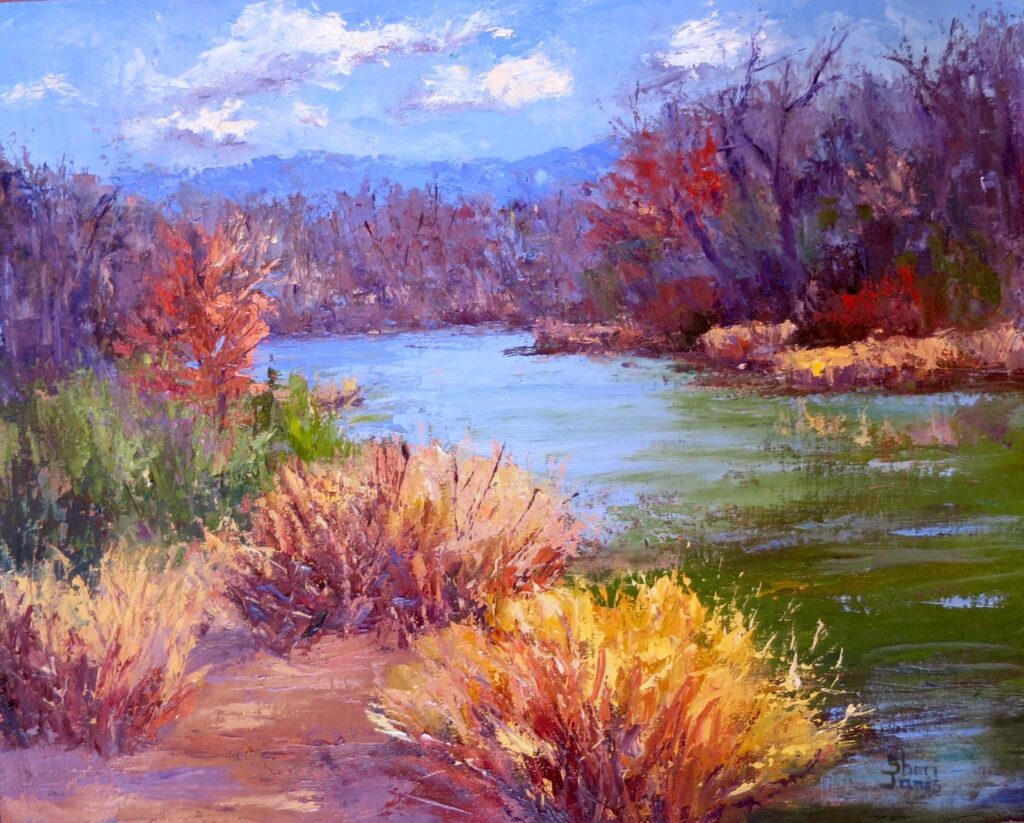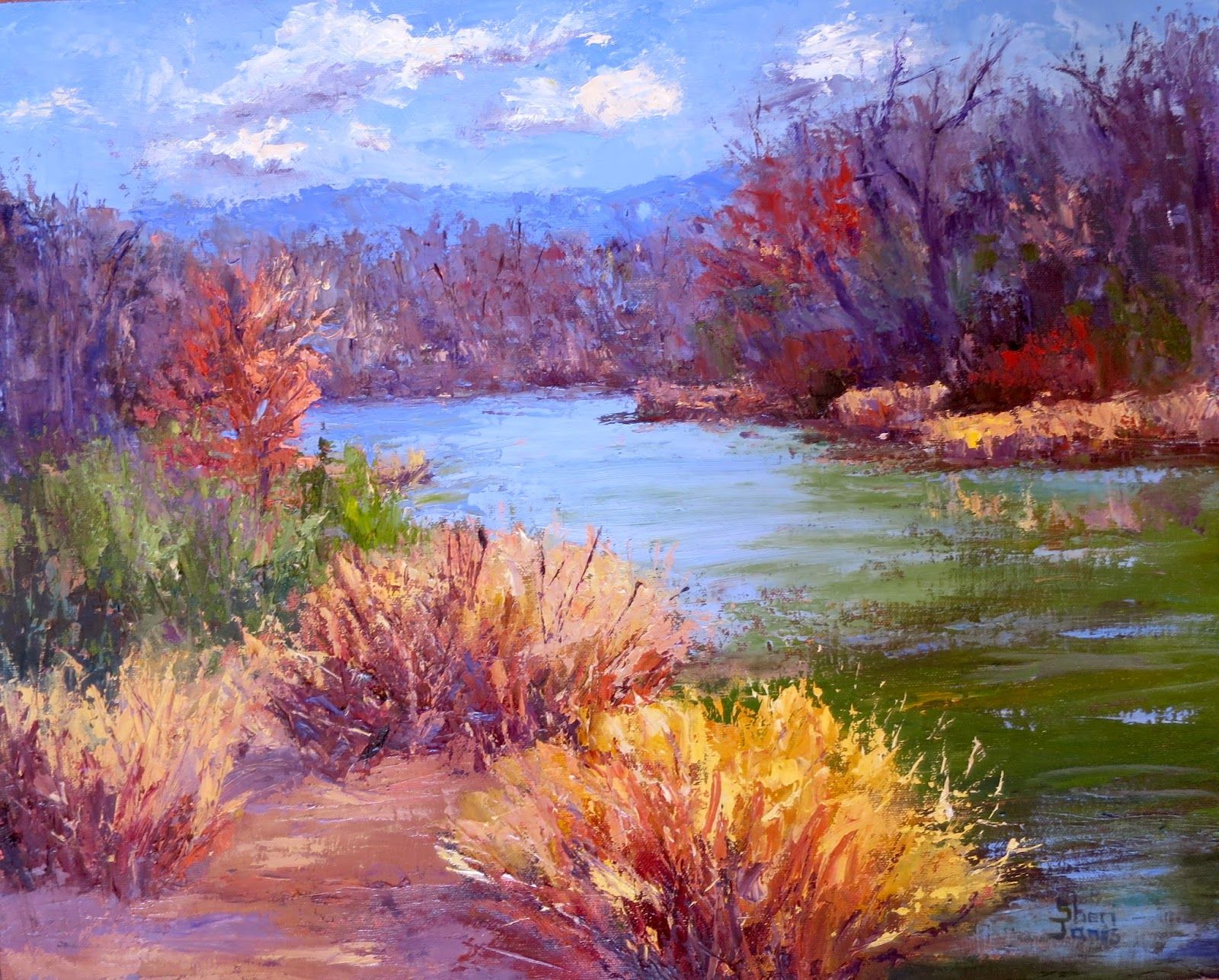
Contemporary Landscape Painting: A Modern Perspective on Nature’s Beauty
Contemporary landscape painting offers a fresh and evolving perspective on a genre deeply rooted in art history. Moving beyond traditional depictions, contemporary artists explore nature’s beauty through innovative techniques, materials, and conceptual frameworks. This article delves into the key characteristics, influential artists, and evolving trends shaping the world of contemporary landscape painting.
Defining Contemporary Landscape Painting
What exactly defines contemporary landscape painting? While traditional landscape art often focused on representational accuracy and idealized scenes, contemporary approaches are far more diverse. They can range from hyperrealism to complete abstraction, incorporating elements of social commentary, environmental awareness, and personal experience. The term ‘contemporary’ generally refers to art produced from the mid-20th century to the present day. Therefore, contemporary landscape painting reflects the artistic sensibilities and concerns of our time.
Key Characteristics
- Experimentation with Materials: Contemporary artists often move beyond traditional oil paints, incorporating acrylics, mixed media, collage, and even digital elements into their landscape paintings.
- Conceptual Depth: More than just pretty pictures, contemporary landscape paintings often explore deeper themes related to environmentalism, urbanization, and our relationship with the natural world.
- Abstraction and Non-Representation: Many artists embrace abstraction, using color, texture, and form to evoke the feeling of a landscape rather than creating a literal depiction.
- Personal Interpretation: Contemporary landscape painting often reflects the artist’s individual perspective and emotional response to the environment.
- Social Commentary: Some artists use landscape painting to address pressing social issues such as climate change, deforestation, and the impact of human activity on the environment.
Influential Artists in Contemporary Landscape Painting
Several artists have significantly shaped the landscape of contemporary landscape painting. Their innovative approaches and unique perspectives have inspired generations of artists.
April Gornik
Known for her atmospheric and evocative landscapes, April Gornik creates paintings that are both beautiful and unsettling. Her work often features dramatic skies and surreal landscapes that hint at the power and fragility of nature. Gornik’s technique involves building up layers of paint to create a luminous and ethereal effect, capturing the essence of a specific place while simultaneously evoking a sense of universal experience.
Peter Doig
Peter Doig’s paintings often depict dreamlike landscapes that blend memory, imagination, and observation. His distinctive style, characterized by bold colors, flattened perspectives, and a sense of melancholic beauty, has made him one of the most influential contemporary landscape painters of our time. Doig’s work often draws inspiration from his travels and personal experiences, resulting in landscapes that are both familiar and otherworldly.
Gerhard Richter
While not exclusively a landscape painter, Gerhard Richter’s abstract landscapes are a significant contribution to the genre. His blurred and distorted images challenge our perception of reality and explore the relationship between photography and painting. Richter’s landscapes are often based on photographs, which he then manipulates and abstracts to create a sense of ambiguity and mystery. His work demonstrates the power of abstraction to evoke the essence of a landscape without relying on representational accuracy.
Yuken Teruya
Yuken Teruya creates intricate and delicate landscapes from recycled materials, often transforming toilet paper rolls and paper bags into miniature forests and natural scenes. His work highlights the beauty that can be found in unexpected places and raises awareness about environmental sustainability. Teruya’s landscapes are a testament to the power of art to transform the mundane into the extraordinary, reminding us of the interconnectedness of nature and human culture.
Evolving Trends in Contemporary Landscape Painting
The world of contemporary landscape painting is constantly evolving, with new trends and approaches emerging all the time. Here are a few notable trends shaping the genre today:
Environmental Awareness
With growing concerns about climate change and environmental degradation, many contemporary landscape paintings are addressing these issues directly. Artists are using their work to raise awareness about the impact of human activity on the environment and to inspire action. These paintings often depict scenes of environmental destruction, such as deforestation, pollution, and the effects of rising sea levels. By confronting viewers with the reality of environmental challenges, artists hope to spark dialogue and promote change.
Urban Landscapes
While traditional landscape painting often focused on rural and natural settings, contemporary landscape painting also embraces urban environments. Artists are exploring the beauty and complexity of cities, depicting scenes of urban decay, industrial landscapes, and the interplay between nature and the built environment. These urban landscapes often reflect the social and cultural dynamics of city life, capturing the energy, diversity, and challenges of modern urban living.
Digital Landscapes
The rise of digital technology has opened up new possibilities for contemporary landscape painting. Artists are using digital tools and techniques to create virtual landscapes, explore new perspectives, and push the boundaries of the genre. Digital landscapes can range from realistic simulations of natural environments to abstract and surreal creations that defy the laws of physics. These digital landscapes offer a unique and innovative way to experience and interact with the natural world.
The Influence of Social Media
Social media platforms like Instagram and Pinterest have had a significant impact on the world of contemporary landscape painting. Artists are using these platforms to share their work, connect with other artists, and build an audience. Social media has also democratized the art world, allowing emerging artists to gain recognition and exposure without relying on traditional galleries and institutions. The visual nature of social media makes it an ideal platform for showcasing landscape paintings, allowing artists to reach a global audience and engage in conversations about their work.
Collecting Contemporary Landscape Painting
Collecting contemporary landscape painting can be a rewarding experience, allowing you to connect with nature, support artists, and build a unique art collection. When starting a collection, it’s important to do your research, visit galleries, and connect with artists whose work resonates with you. Consider the size, style, and subject matter of the paintings you’re interested in, and think about how they will fit into your home or office. It’s also a good idea to consult with art advisors or appraisers to ensure that you’re making informed investment decisions. Remember, the most important thing is to collect art that you love and that brings you joy.
The Enduring Appeal of Landscape Painting
Despite the rise of new art forms and technologies, contemporary landscape painting continues to captivate audiences and inspire artists. Its enduring appeal lies in its ability to connect us with nature, evoke emotions, and explore the complexities of our relationship with the environment. Whether it’s a realistic depiction of a majestic mountain range or an abstract interpretation of a serene forest, landscape painting has the power to transport us to another place and time. As long as there is beauty in the world and a desire to capture it on canvas, contemporary landscape painting will continue to thrive and evolve.
The ongoing exploration and reinterpretation of this classic genre ensure that contemporary landscape painting remains a vital and relevant art form for years to come. [See also: Abstract Art Techniques] [See also: History of Landscape Art] [See also: Famous Landscape Artists]

